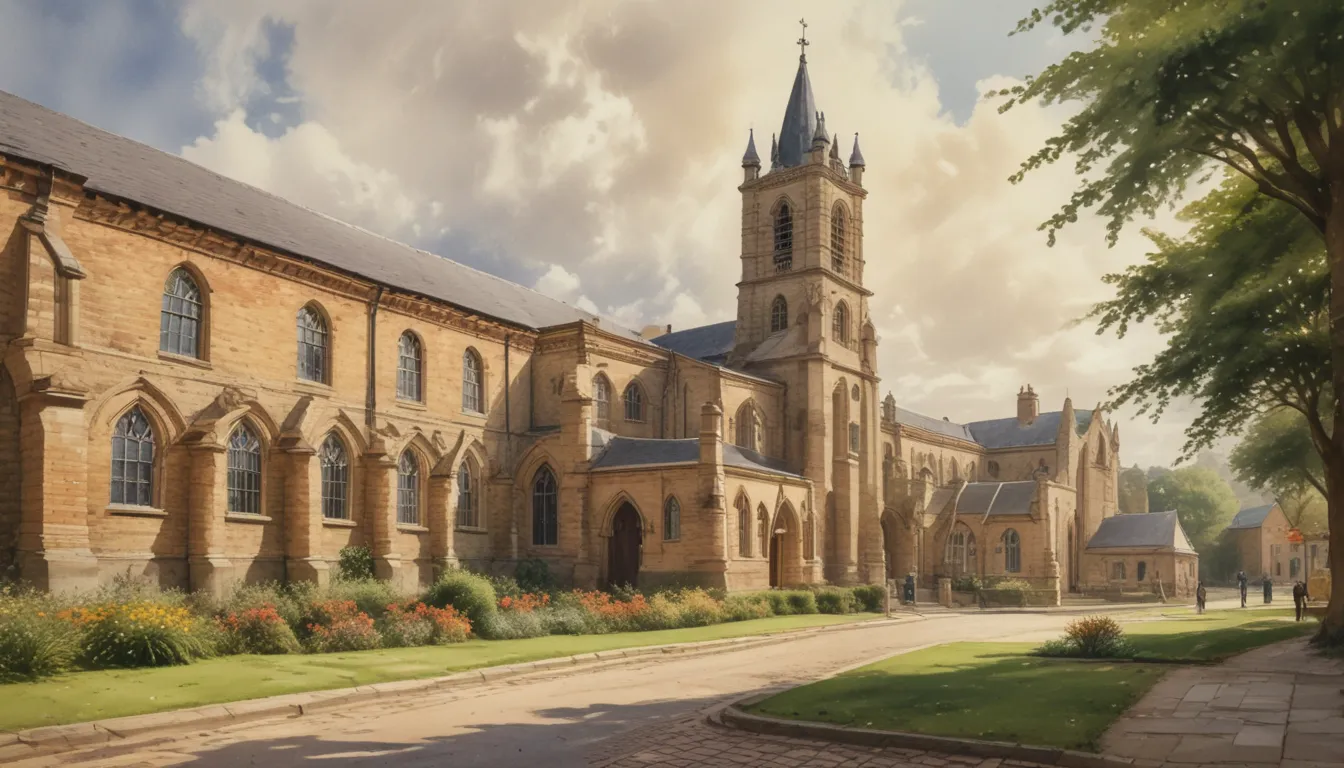The images in our articles are for illustrative purposes only and may not exactly match the content. They are intended to capture your interest and complement the text, not to replace it.
Nestled in the picturesque North East England, Saint Paul’s Monastery in Jarrow stands as a beacon of history and cultural richness. A treasure trove of knowledge and spirituality, this ancient landmark has captured the hearts of historians, archaeologists, and religious enthusiasts alike. With roots dating back to the 7th century, Saint Paul’s Monastery has witnessed the scholarly endeavors of the Venerable Bede, an esteemed figure in Britain’s early intellectual landscape. Beyond its association with Bede, the monastery played a vital role in upholding and propagating Christianity during turbulent times in England’s past. Today, visitors can partake in a journey through time as they explore the remnants of this iconic structure and immerse themselves in its enthralling narratives. Let’s embark on a fascinating exploration of the 11 extraordinary facts that make Saint Paul’s Monastery an indispensable destination for history buffs and seekers of cultural enlightenment.
Unraveling the Historical Tapestry of Saint Paul’s Monastery
Established in 681 AD by Benedict Biscop, the nobleman and monk, Saint Paul’s Monastery holds a venerable position in the religious and cultural heritage of the region. The monastery was envisioned as a bastion of Christianity and a nurturing environment for the pursuit of knowledge and learning.
The Scholarly Legacy of Venerable Bede at Saint Paul’s Monastery
Saint Paul’s Monastery served as the abode of the Venerable Bede during the 8th century. Known for his monumental work, “Ecclesiastical History of the English People,” Bede made significant contributions to the historical and theological landscape of Britain.
A Sanctuary of Learning and Intellectual Pursuits
With a renowned library that housed a plethora of manuscripts spanning diverse subjects like theology, science, and philosophy, Saint Paul’s Monastery emerged as a hub of intellectual activity during the Dark Ages. Monastic scholars in Jarrow engaged passionately in the preservation and advancement of knowledge.
The Magnificent Codex Amiatinus: A Testament to Monastic Craftsmanship
An awe-inspiring creation of the monastery, the Codex Amiatinus, a complete Bible from the early 8th century, showcases the meticulous scribe work and artistic illumination mastered by the monks. This invaluable manuscript now finds its home in the Biblioteca Medicea Laurenziana in Florence, Italy.
Illuminating Minds with Artistic Endeavors
The monks of Saint Paul’s Monastery excelled in the art of book production and illumination, crafting exquisite manuscripts adorned with intricate artwork. Their dedication to preserving important texts and disseminating knowledge through visually captivating materials is a testament to their skill and devotion.
Scriptorium: The Heartbeat of Manuscript Production
At the scriptorium within the monastery, monks labored diligently to copy and illuminate religious texts, classical works, and scientific treatises. These painstakingly crafted copies became conduits of knowledge, bridging the chasms of time and space.
Embracing Sustainability: The Monastery’s Agricultural Pursuits
In an endeavor to achieve self-sustainability, Saint Paul’s Monastery maintained its own farm and gardens. The monks engaged in agricultural practices, rearing livestock, cultivating crops, and tending to orchards to sustain the needs of the community.
Endurance Amidst Turbulence: Viking Raids and Revival
Despite facing the wrath of Viking raids and witnessing a period of decline, Saint Paul’s Monastery experienced a renaissance in the 19th century through restoration efforts. Today, it stands tall as a UNESCO World Heritage Site, welcoming visitors from around the world to relive its storied past.
A Continuation of Legacy: Saint Paul’s Monastery in the Modern Era
The legacy of Saint Paul’s Monastery lives on in the contemporary world through its profound impact on knowledge, scholarship, and spirituality. Its enduring influence resonates through the preservation of ancient texts, the pursuit of learning, and the propagation of the Christian faith.
In the enchanting realm of Saint Paul’s Monastery, Jarrow, the echoes of the past reverberate through time, beckoning visitors to embark on a voyage of discovery and enlightenment. From its scholarly endeavors to its artistic marvels, the monastery stands as a testament to human ingenuity and resilience, drawing inquisitive minds from far and wide to bask in its historical aura.
Embracing the Historic Marvel of Saint Paul’s Monastery: A Journey into the Past and Beyond
Saint Paul’s Monastery in Jarrow stands as a quintessential symbol of historical grandeur and architectural splendor, inviting visitors to delve into its illustrious history and serene ambiance. Whether you’re a history aficionado, an architecture enthusiast, or a soul in search of tranquility, a visit to Saint Paul’s Monastery promises an unforgettable experience enriched with centuries of heritage and wisdom.
As you wander through the remnants of the Anglo-Saxon monastery, marvel at the renowned Codex Amiatinus, and absorb the essence of the scholar Bede’s legacy, Saint Paul’s Monastery weaves a tale of antiquity and enlightenment that resonates with every step you take within its sacred precincts.
Frequently Asked Questions
- What historical significance does Saint Paul’s Monastery hold?
-
Founded in the 7th century, Saint Paul’s Monastery played a pivotal role in the spread of Christianity and the advancement of knowledge in the region. It is renowned for being the workplace of the esteemed scholar Bede.
-
Can visitors explore the ancient library at Saint Paul’s Monastery?
-
Yes, visitors have the opportunity to peruse the ancient library, which houses a priceless collection of books and manuscripts of historical importance.
-
Is there an entrance fee to visit Saint Paul’s Monastery?
-
No, there is no entrance fee to access Saint Paul’s Monastery, making it accessible to all who wish to delve into its history and marvel at its architectural wonders.
-
Are photography and guided tours allowed at Saint Paul’s Monastery?
- Photography is generally allowed within the monastery premises, although visitors are advised to check with the staff for any specific guidelines. Additionally, guided tours are available for those seeking a comprehensive understanding of the monastery’s history and significance.
Experience the allure of Saint Paul’s Monastery in Jarrow as it unfolds before your eyes, offering a glimpse into a bygone era brimming with wisdom, artistry, and spiritual resonance. Join us on a journey of exploration and enlightenment as we traverse the hallowed halls and sacred spaces of this venerable landmark, where history comes to life and whispers of the past linger in the air, waiting to be heard and cherished.
So, whether you’re an avid history buff, an architecture aficionado, or simply a seeker of extraordinary experiences, make sure to add Saint Paul’s Monastery in Jarrow to your list of must-visit destinations. Embark on a voyage of discovery and immerse yourself in the timeless charm and historical tapestry of this iconic site, where the echoes of the past resonate with the promise of a captivating journey into antiquity and beyond.






